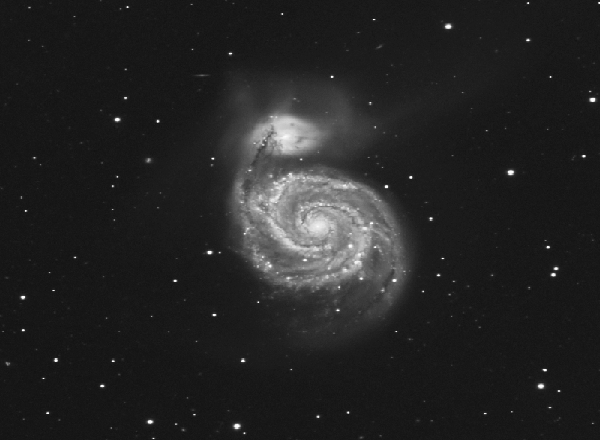Yellow Stars Can't Go Supernova by Themselves
| Paula Marie Navarra | | Sep 14, 2014 09:58 AM EDT |
Astrophysicists from the University of Tokyo have affirmed the standard theory that only red supergiants and Wolf-Rayet or blue stars can become supernovae.
The model was called into question when the yellow supergiant star went supernova, apparently by itself. This supernova, SN 2011dh, occurred in the whirlpool galaxy M51 located 24 million light years away from Earth.
Like Us on Facebook
A team from the Kavli IPMU at the University of Tokyo led by Gastón Folatelli had previously predicted the existence of a companion star on the basis of numerical calculations. That no companion star was apparent at the birth of SN 2011dh prompted the team to begin an intensive search for the companion star.
The team eventually found evidence of a bright blue star, the binary companion star to SN 2011dh using the Hubble Space Telescope.
This finding has wide-ranging implications for our knowledge of binary systems and supernova mechanisms. It seems t confirm that most massive stars belong to close binary systems.
Episodes of mass transfer between the members of binary star systems affect the way the stars evolve, meaning that there are many more potential scenarios for the final stages of supernova ancestors.
Supernova SN 2011dh seemed to be the exception because the standard theory couldn't explain it. The star that gave birth to this supernova was a yellow supergiant star.
Astronomers know supergiant stars in isolation aren't thought capable of becoming supernovae.
What the Kavli IPMU team showed was that the exploding yellow star must have been extended (like a yellow supergiant) and must have belonged to a binary system.
"We produced detailed models that self-consistently explained every property of SN 2011dh through the explosion of a yellow supergiant star in a binary system," said Melina Bersten to Phys.org.
The standard theory states only cool and extended stars (or red supergiants) or hot and blue stars (better known as Wolf-Rayet stars) are able to become supernovae.
©2015 Chinatopix All rights reserved. Do not reproduce without permission
EDITOR'S PICKS
-

Did the Trump administration just announce plans for a trade war with ‘hostile’ China and Russia?
-

US Senate passes Taiwan travel bill slammed by China
-

As Yan Sihong’s family grieves, here are other Chinese students who went missing abroad. Some have never been found
-

Beijing blasts Western critics who ‘smear China’ with the term sharp power
-

China Envoy Seeks to Defuse Tensions With U.S. as a Trade War Brews
-

Singapore's Deputy PM Provides Bitcoin Vote of Confidence Amid China's Blanket Bans
-

China warns investors over risks in overseas virtual currency trading
-

Chinese government most trustworthy: survey
-

Kashima Antlers On Course For Back-To-Back Titles
MOST POPULAR
LATEST NEWS
Zhou Yongkang: China's Former Security Chief Sentenced to Life in Prison

China's former Chief of the Ministry of Public Security, Zhou Yongkang, has been given a life sentence after he was found guilty of abusing his office, bribery and deliberately ... Full Article
TRENDING STORY

China Pork Prices Expected to Stabilize As The Supplies Recover

Elephone P9000 Smartphone is now on Sale on Amazon India

There's a Big Chance Cliffhangers Won't Still Be Resolved When Grey's Anatomy Season 13 Returns

Supreme Court Ruled on Samsung vs Apple Dispute for Patent Infringement

Microsoft Surface Pro 5 Rumors and Release Date: What is the Latest?










